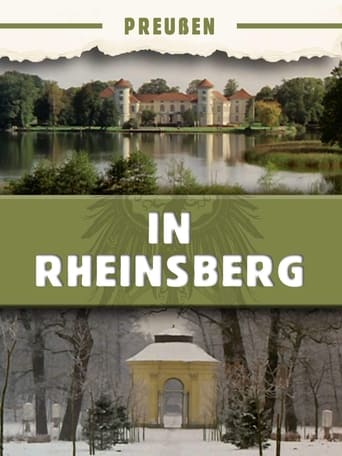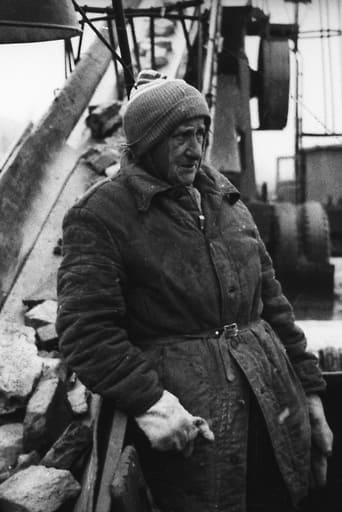DEFA-Studio für Wochenschau und Dokumentarfilme
The Wind Rose 1957
An international anthology about the struggles of female workers around the world.
The Laughing Man 1966
Posing as West German journalists, East German documentary filmmakers Heynowski and Scheumann pay a visit to the notorious Nazi-turned-mercenary Siegfried “Kongo” Müller, pump him with booze, and get him to talk about his life and war campaigns in Africa.
From Us To Me / Vom Wir zum Ich 1988
This first co-production between the GDR and Great Britain is intended to contribute to an understanding of the situation and attitudes of millions of working people in opposing social orders. Using the example of shipyard workers, fishermen, the brigade and family of a trade union active cook and unemployed person of various ages and professions in Newcastle on the one hand and a brigade of crane operators of the Warnowwerft and fishermen of the Warnemünde cooperative on the other hand, insights into the way of life and attitudes of people of our time are to be conveyed.
Dresden Oktober '89 1989
Tango Dream 1985
Sitting at her typewriter, listening to tango music, she dreams. Buenos Aires and Montevideo are far away, a different world where, long ago, the tango came into being. A dream about dance and music, as well as about unfulfilled desire and wanderlust behind the Berlin Wall.
Tango 1985
A brief history of the emergence and artistic innovations of tango in 19th-century Argentina and Europe. The film offers a mosaic of tango melodies, art works, dance performances, historical footage, photographs of Buenos Aires at the turn of the 20th century, and texts by Celedonio Flores and Enrique Santos Discépolo.
In Syrien auf Montage 1971
The film is a reportage showing the help of workers from the GDR in the industrial reconstruction of Syria. We witness the friendly relationship between workers from both countries, who are jointly involved in the construction of the cotton spinning mill in Homs. In impressive pictures the exoticism of the environment and the mentality of the Syrian hosts is shown. At the same time it becomes clear that the workers from the GDR become 'ambassadors of the GDR' through their collegial behaviour and good work.
whisper & SHOUT 1988
Documents important parts of the East German rock music scene of the late 1980s, from well-established bands like Silly, to underground rock bands like Feeling B. This road movie features young people using music to express their take on life, opposition to their parents' generation and opinions on the social and political climate in East Germany. It includes clips from concerts and interviews with fans and members of various bands, such as Feeling B's Christian Lorenz and Paul Landers, now members of Rammstein.
Feinstahlwerk Burgas 1989
Documentary about a neck mill in Bulgaria
In Rheinsberg 1982
Documentary about the small city of Rheinsberg, once the summer residence of Prussian princes. Average working class people comment on the history of this special place.
Ludwig van Beethoven 1954
Documentary on the master composer, from a GDR point of view.
Martha 1979
Martha Bieder is the last rubble-woman in Berlin Rummelsburg. Every day, rain or shine, she stands at the conveyor belt - as she has for decades - sorting through rubble. After a retirement party thrown for her by her male colleagues, she tells her story of being a rubble-woman in post-war Germany.
Republic of Zambia 1979
Erich Honecker visits the Republic of Zambia
Der Weg nach oben 1950
The economic and cultural improvements of the Soviet Occupied Sector are documented with scenes from the years 1945 to 1950. The film deals with the land reform, the founding of the Socialist Unity Party, the expropriation of war criminals, the founding of the GDR and the first Five Year Plan in July 1950. Special attention is dedicated to the setup of the steel industry. All this is shown in contrast to the new Federal Republic of Germany, where unemployment, slums and the West Berlin airlift prevail. The Cold War of those years is reflected in the film as well as a part of the development of post-war Germany.
Frau am Klavichord 1981
With films including the 'rubble woman' portrait Martha, the three-part experimental film cycle Potter's Stier, Venus nach Giorgione and Frau am Klavichord, the portrait of the artist Kurzer Besuch bei Hermann Glöckner, and also the documentaries Rangierer and Die Küche, noted for their outstanding sound and visuals, Jürgen Böttcher distances himself yet further from the didactic tone and abstract heroic representation of socialist films.
Der springende Punkt 1987
Archive footage of bomb detonations during the Second World War combined with abstract graphic elements which show the destructive potential of modern nuclear missiles. Together the images are a silent warning of armament and war.
Life in Wittstock 1984
Wittstock an der Dosse is located in the German state Mark Brandenburg, apx. 90 kilometers from Berlin. Since 1974 Volker Koepp visited the town several times to examine life of the female workers in the textile industry. He interviewed them about their work, spare-time, thoughts and feelings. Three of them were questioned repeatedly for a long-time overview. This is the outcome of 10 years of Koepp's work. Written by Tom Zoerner
Somalia - Die große Anstrengung 1977
East German documentary short about Somalia in 1976.
Leipziger Messe 1946 1946
Documentary short about the Leipzig Tradefair in 1946.
















